Click Bond Brings AI into Supply Chains

Manufacturers have always been on the cutting edge of tech development and integration—and it’s no different with artificial intelligence. Today, Click Bond, Inc., a manufacturer of adhesive-bonded fasteners for aerospace and industrial use, is finding applications for AI in the supply chain.
The challenge: Supply chain management is an inexact art, according to Click Bond Chief Executive and NAM SMM Vice Chair Karl Hutter, and technology like AI has the capacity to strengthen operations.
- “There are many spots … [where] a guess has to be taken or padding has to be put in because of the known unreliability of data,” said Hutter. “This is where technology has a big role to play.”
Improving efficiency: AI can break through these challenges, separating signal from “noise” and avoiding presumptions that can cause inefficiencies.
- “We need to have a better sense of the supply, the demand, the schedule,” Hutter said. “This is where those kinds of tools can fit in—so we as a supplier can optimize our production runs, meet our customers’ needs efficiently and be responsive to just-in-time supply.”
- “AI does that key job of finding what matters and correlating historic data and making predictions in a way a human can’t,” he continued.
Translating data: Because there is no single, industry-wide method for formatting data, it can be difficult for manufacturers to combine their knowledge. Happily, AI can help.
- “My data tables might look different than my customers’ and suppliers’,” said Hutter. “AI can understand the rules of data structure, and that of our customers and suppliers, and it can be a translator between them.”
- For example, Click Bond has supplied products to the Boeing Company for almost 40 years, contributing to every type of product made across its military, civil and space divisions. AI stands to take that collaboration to an even higher level.
Enhancing production: AI tools also help manufacturers during the production process by translating different kinds of data and pointing toward solutions.
- “[AI’s translation capability] applies to the technical data environment, too—how you go from a model and simulation to a produced part,” said Hutter. “It’s the same thing. How do you do technical data interchange confidently and securely? This technology [can help].”
Advice for other manufacturers: Hutter recently took part in a workshop on these tools, and he encourages manufacturers who are curious about the technology to find similar opportunities.
- “There is nothing that makes these concepts come to life [like] getting your hands on them,” said Hutter. “You can sit there and furrow your brow and read a bunch of articles, but the best thing to do is to find one of the many opportunities for some hands-on education—and you’ll start to understand what these tools can do.”
NAM Leads Effort to Reform PBMs
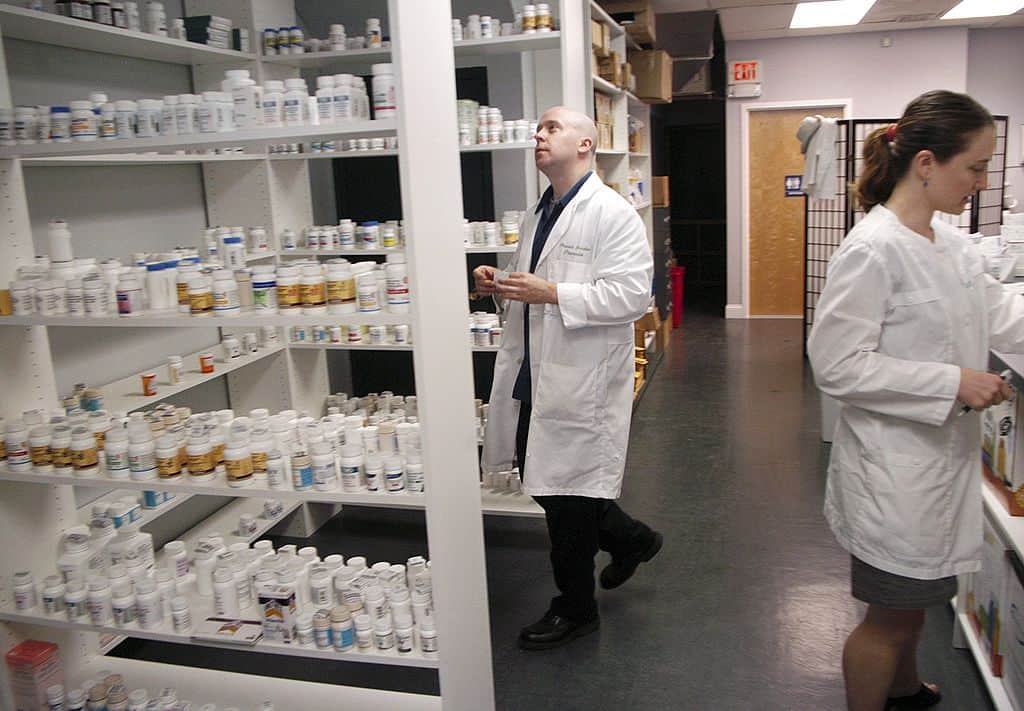
Middlemen created to manage the price of prescription drugs are instead driving up health care costs for manufacturers and manufacturing workers, the NAM told the House Committee on Oversight and Accountability on Tuesday, the same day the committee released a report on pharmacy benefit managers’ practices and held a hearing on the matter.
What’s going on: “PBMs’ business models have the direct effect of increasing health care costs at the expense of manufacturers and manufacturing workers,” NAM Vice President of Domestic Policy Charles Crain said in advance of the hearing, the latest in a series examining PBM practices.
Crain told lawmakers PBM reform legislation should include:
- “Increased transparency into PBMs’ business models and the many factors that contribute to a drug’s costs, formulary placement and the PBMs’ compensation;
- Rebate passthrough, which will ensure 100% of negotiated pharmaceutical savings are passed from the PBM to the health plan sponsor and workers; and
- Delinking of PBM compensation from the list price of medication.”
Report highlights: The committee’s report, the culmination of a 16-month investigation, is in line with the NAM’s longstanding advocacy. The report found that PBMs:
- Drive increased drug prices, which inflate PBM profits;
- Extract high rebates from biopharmaceutical manufacturers, often pocketing a significant portion of any savings rather than reducing costs for patients;
- Dictate whether and how medicines appear on formularies, which determine insurance companies’ coverage decisions and patients’ out-of-pocket costs;
- Steer patients toward drugs based on PBMs’ profit margins rather than patient costs; and
- Operate without sufficient transparency into their business practices.
What it all means: The committee “identified numerous instances where the federal government, states and private payers have found PBMs to have utilized opaque pricing and utilization schemes to overcharge plans and payers by hundreds of millions of dollars,” the report states.
- The report indicates that the present role of PBMs in prescription drug markets is failing and requires change, something the NAM has long advocated. “Congress and states must implement legislative reforms to increase the transparency of the PBM market and ensure patients are placed at the center of our health care system, rather than PBMs’ profits.”
The last word: “Manufacturers provide health care benefits so they can effectively attract and retain employees, to maintain a healthy and productive workforce and because they believe it is the right thing to do—but PBMs are a meaningful cause of the skyrocketing costs of health care,” Crain said.
- “Congress must enact reforms to the PBM system so that employers can negotiate, compete and achieve health care savings for their workers.”
CISA Should Revise Draft Cyber Rule

Requirements proposed earlier this year by the Department of Homeland Security’s Cybersecurity and Infrastructure Security Agency are overbroad and would prove burdensome to manufacturers if adopted, the NAM told the Biden administration last week.
What’s going on: In April, CISA published draft rulemaking under the Cyber Incident Reporting for Critical Infrastructure Act of 2022—scheduled to go into effect next year—that would require “covered entities” in “critical infrastructure sector[s]” to report major cyber incidents to CISA within 72 hours. It also mandated that any ransomware payments be reported within just 24 hours.
Why it’s a problem: The proposed rulemaking could affect more than 300,000 entities, according to CISA’s own estimate (JD Supra). Many of these organizations are either not truly “critical infrastructure” or too small to have the resources to undertake the outlined actions in the specified time, the NAM told CISA.
- Furthermore, the regulations themselves are too expansive, mandating the reporting of incidents that do not even affect the operation of critical infrastructure.
- They also require huge amounts of information in a short period—from companies in the throes of recovery from devastating cyberattacks.
The NAM says: “[T]he NAM respectfully encourages the agency to drastically reduce the number of entities required to report, and the number of incidents they have to report,” NAM Vice President of Domestic Policy Charles Crain told the agency during the public comment period on the proposed regulation, which ended last week.
- “Doing so will ensure that CISA receives useful information about cybersecurity incidents—without overburdening manufacturers with overbroad and unworkable disclosure requirements.”
What to do: In addition to narrowing the scope of “covered entities,” CISA should revise several aspects of the rulemaking before implementing it, the NAM said. Changes should include:
- Limiting the volume of reported cyber-incident information;
- Narrowing the scope of reportable cyber incidents; and
- Lightening and safeguarding the contents of cyber-incident reports.
Manufacturing in 2030: The Opportunity and Challenge of Manufacturing Data

As manufacturers move toward building smarter factories with connected machines, the data those systems produce can offer a host of benefits: improved efficiency, better productivity, informed decision-making, value creation and, ultimately, competitiveness. Yet becoming a data-driven business comes with its share of challenges. In this year’s Manufacturing in 2030 Survey, Data Mastery: A Key to Industrial Competitiveness, the NAM’s Manufacturing Leadership Council sheds light on the successes and opportunities for how manufacturers are transforming their operations with data.
Security and privacy concerns: As factories become more connected, cybersecurity becomes a greater imperative. For this reason, survey respondents validated that both data security and data privacy are essential.
- More than 90% of respondents have a formal or partial policy on data security and data privacy.
- About two-thirds of manufacturers have a formal or partial policy on data quality.
- More than 60% have a corporate-wide plan, strategy or guidelines for data management, but only 15% follow the plan in its entirety.
How data is used: As manufacturers advance along their M4.0 journey, data is becoming their lifeblood, driving insights and decision-making. Yet the survey revealed a gap between available data sources and their utilization, a notable area for improvement as the industry looks toward the future.
- Spreadsheets are still king: 70% of manufacturers enter data to them manually, and 68% still use them to analyze data.
- 44% of manufacturing leaders say the amount of data they collect is double what it was two years ago, and they anticipate it will triple by 2030.
- While nearly 60% of manufacturers use data to understand and optimize projects, there is a shift toward using data to make predictions about operational performance, including machine performance, in the next decade.
Business impact: Most manufacturers leverage data to find ways to save money or promote business growth. However, less than half have a good understanding of the dollar value of their data.
- Only about 25% of manufacturers have high confidence that the right data is being collected.
- Most manufactures have only moderate confidence in their analytic capabilities.
- Top challenges include data that comes from different systems or in different formats (53%), data that is not easy to access (28%) and lack of skills to analyze data effectively (28%).
- However, despite those challenges, 95% of manufacturers say data makes for faster and/or higher-quality decision-making.
The bottom line: An overwhelming majority of manufacturers (86%) believe that the effective use of manufacturing data will be “essential” to their competitiveness. But to realize data’s potential, manufacturers must figure out how to organize and analyze their data effectively, ensure that their data is trustworthy and align their business strategy closely with their data strategy.
Explore the survey: Get a deeper look at the current state of data mastery in manufacturing. Click here to download your copy.
In It for the Long Haul: C.H. Robinson Takes on Sustainability
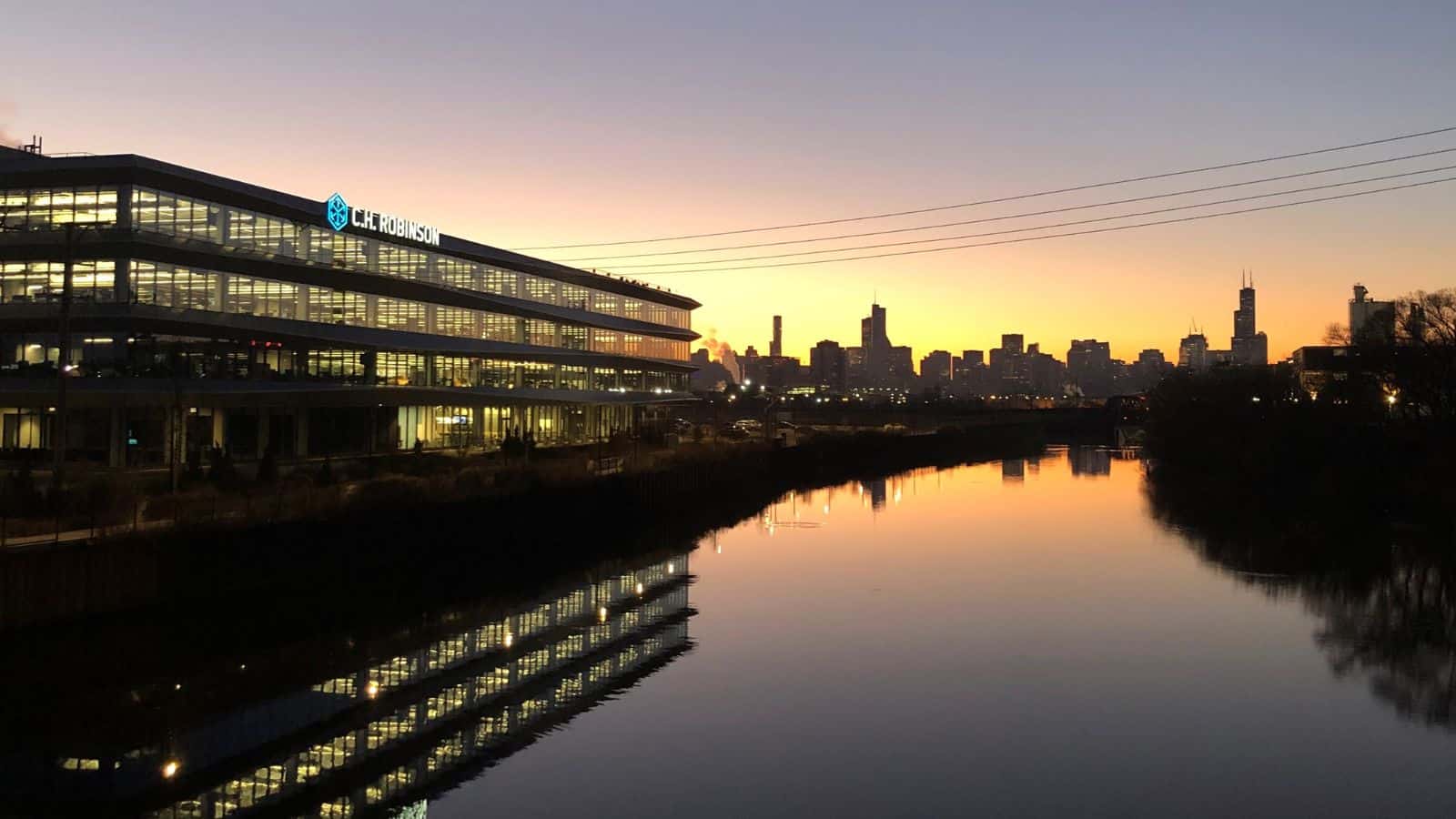
It’s not every day that an international company meets an ambitious sustainability goal two years early. But last May, that’s exactly what happened at 119-year-old transportation logistics provider C.H. Robinson.
- The goal under discussion: a company-wide reduction in intensity of Scope 1 and 2 emissions—those emissions generated by the company’s own operations—of 47% (more than the 40% targeted). C.H. Robinson had previously calculated meeting the objective by 2025.
Simple but effective: “Most of it was looking at where we could find inefficiencies” and correcting them, said C.H. Robinson Vice President of Environment, Social and Governance Rachel Schwalbach. Some changes came from suggestions “our own employees brought forward: LED lighting, responsible use” of electricity.
- Efforts also included a marked increase in the company’s use of renewables generally. From 2019 to 2023, C.H. Robinson renewable-energy purchases rose 40%.
Not an either/or proposition: The Eden Prairie, Minnesota–based company—which solves logistics challenges for clients through freight forwarding and other innovative transportation solutions—is proof positive that businesses don’t have to choose between good environmental stewardship and profitability.
- In fact, “sometimes the sustainable option is actually the less expensive option,” Schwalbach told the NAM. “C.H. Robinson is working with suppliers every day to drive out waste, and often that’s been because we’ve looked at it through a lens of cost savings or time reduction. Now it’s also through the lens of sustainability.”
- What’s more, “if you’re approaching sustainability right, it should be tied to your overall business strategy. Sometimes it’s as simple as making sure you’re compliant with rules and regulations” as you meet sustainability requirements.
A competitive advantage: Reducing the footprint of operations can be a competitive advantage for manufacturers, too.
- “We get asked about sustainability by nearly all our stakeholders, so it really has to be a part of strategic decision making across the business,” Schwalbach continued. “Our shippers are also getting asked about [sustainability] by their investors and customers. People across the business are thinking about it, so it’s [to our advantage to] make sure it’s integrated across all areas.”
No business is an island: Businesses must keep in mind that sustainability is a shared interest, and the environment’s health is best served by teamwork, not isolated efforts, according to Schwalbach.
- “As companies continue to put big [sustainability] goals out there, I cannot emphasize enough the need for collaboration across industries, as clichéd as it sounds,” Schwalbach said. “Having people who are willing to come to the table and say, ‘Hey, let’s figure this out together,’ is going to be pretty critical.”
- For C.H. Robinson, that means engaging with customers, carriers and a broad range of other stakeholders.
Supporting climate-friendly practices: The right moves by policymakers can also help support the private sector’s sustainability efforts.
- “As we’re looking increasingly at alternative fuels and electric vehicles here in the U.S., we need an electric grid that can support the transition to a lower-carbon economy,” Schwalbach said. “Continuing to invest in [strengthening] the grid will help us invest in the right technologies. We need to be able to move forward quickly in a way that doesn’t cause disruption to the supply chain and transportation.”
- Companies want clarity around regulations, too. “There are so many [regulations] coming out right now, and companies want to know, ‘How do I get the right [climate-related] data? How do I make sure the data are accurate?’”
In for the long haul: So what’s next for C.H. Robinson? A continued focus on conservation, for one thing.
- “You meet your goals, and that’s really exciting, but there’s no time to sit around,” Schwalbach said, adding that the company is now in the process of figuring out “what new sustainability goals will look like for carbon reduction.”
- Ultimately, those goals will be met by ensuring a commitment to the environment remains a company-wide focus, she told us.
- “Doing sustainability well means it’s integrated. C.H. Robinson is a 119-year-old company, and sustainability is about making sure we’re going to be successful for another 119 years.”
Manufacturers Rally to Advance Nuclear Energy
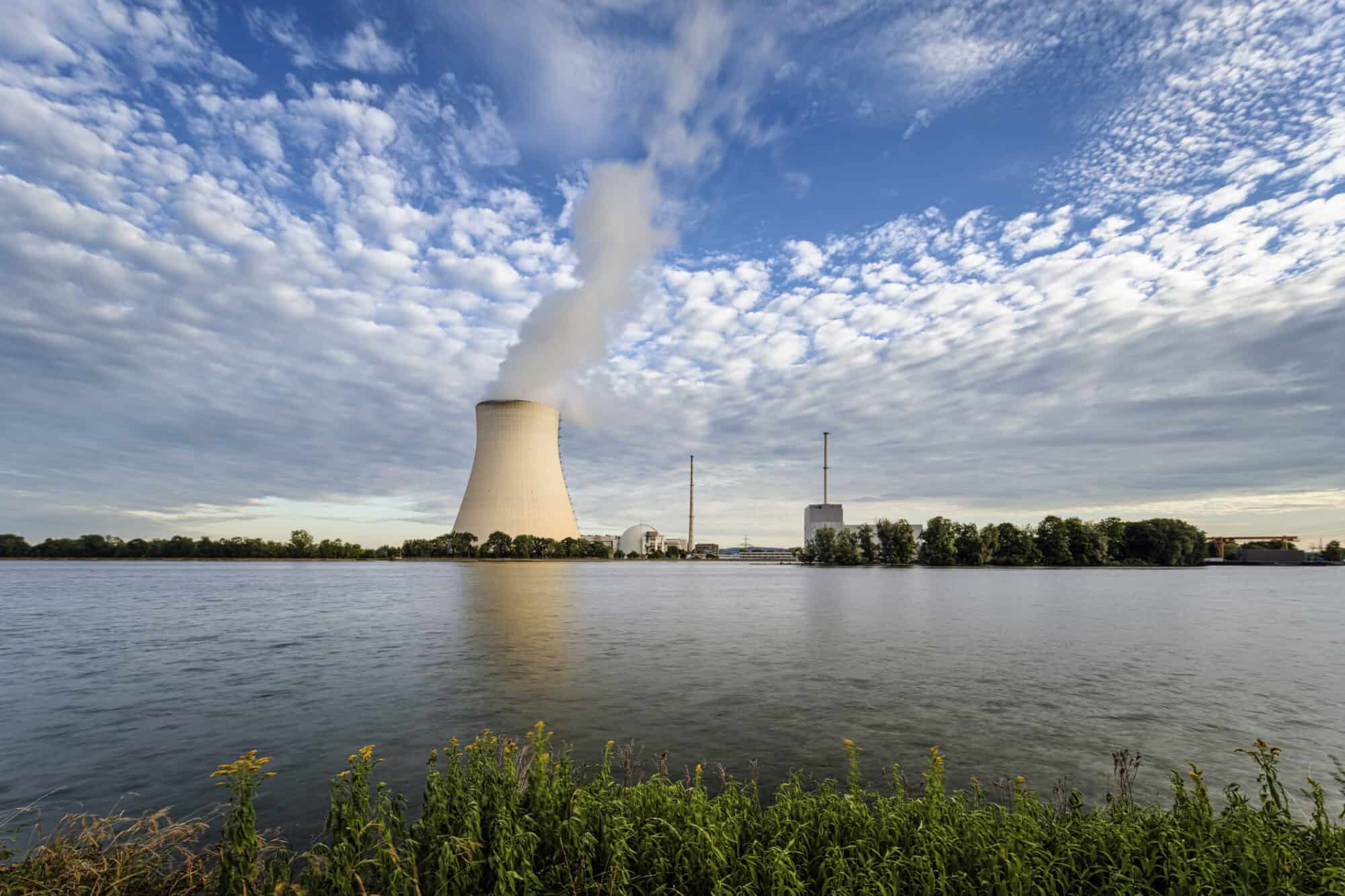
The NAM is pressing the U.S. Senate to support a bill that would promote clean nuclear energy development.
What it does: The legislation, called the Accelerating Deployment of Versatile, Advanced Nuclear for Clean Energy (ADVANCE) Act, offers a number of components to accelerate the development and commercialization of advanced nuclear reactor technologies. It includes:
- Permitting and approval reform to make it easier for reactor projects to locate on brownfield sites, land that is underused or has been abandoned because of industrial waste;
- “Early licensing work” provisions to help deploy reactors more quickly at national security infrastructure sites;
- A series of awards to encourage companies to develop advanced-reactor technology; and
- Hiring support for the Nuclear Regulatory Commission, which is understaffed to deal with the level of applications for new reactors.
Where it stands: The legislation was reported out of the Senate Environment and Public Works Committee with a bipartisan vote of 16–3, and companion legislation was passed in the House of Representatives by an overwhelming vote of 365–36. Now, the NAM is pushing the Senate to pass the bill.
Why it matters: “Nuclear-generated power is an important part of an all-of-the-above energy strategy, which is necessary to meet the power needs of a growing manufacturing sector,” said NAM Managing Vice President of Policy Chris Netram. “The ADVANCE Act would accelerate the development and commercialization of advanced nuclear reactor technologies through reforms to the existing licensing and permitting systems.”
Our action: The NAM is urging Congress to support the bill ahead of the Senate’s vote, detailing its benefits in a letter to senators.
The last word: “Manufacturers create jobs that support families, and develop and deploy innovative technologies that make our environment cleaner,” said Netram. “Increasing our nation’s energy supply, including the growth of nuclear power, will support manufacturing investments and jobs across America.”
NAM, Partners Urge Administration to Withdraw “March-in” Proposal
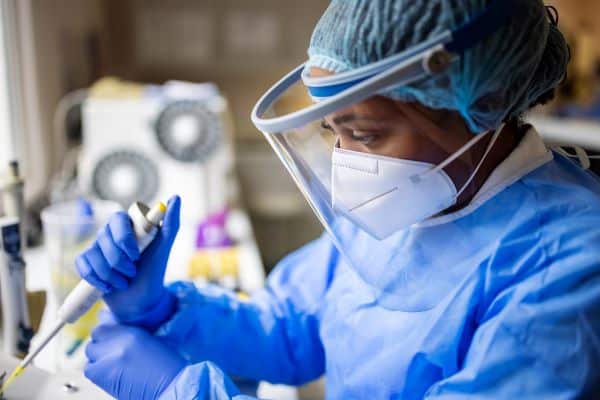
If finalized, guidance proposed last year by the Biden administration to allow the federal government to seize manufacturers’ intellectual property rights would be ruinous to the U.S. innovation economy, the NAM and state partners told Commerce Secretary Gina Raimondo this week.
What’s going on: In December, the Biden administration issued a proposal to enable government agencies to “march in” and revoke companies’ patent exclusivity if a product’s development was funded in any part by federal research dollars.
- Under the proposal, the government’s decision of whether to march in would be based on a product’s price—effectively imposing government-mandated price controls on innovative products like clean energy solutions, next-generation semiconductors and lifesaving medicines.
Manufacturers fight back: The NAM and a coalition of regional and state manufacturing associations are pushing back, highlighting the importance of ironclad IP rights to groundbreaking innovation.
- “[T]urning groundbreaking R&D into innovative products for the American people is only possible if creators—from university researchers to early-stage entrepreneurs to established businesses—can rely on strong intellectual property protections,” the associations told Raimondo.
Small business impacts: Startups and small businesses would pay the heaviest toll if the new march-in standards are finalized.
- Scientists and researchers at universities nationwide will face difficulties in partnering with the industry and in founding startups based on their research, “strik[ing] a blow to the local economies in [all 50] states that depend on university-centered innovation hubs for job creation and economic growth.”
- If a promising idea makes it out of the lab, outside investors will be reluctant to inject the capital necessary for further R&D and product development—resulting in fewer life-changing and lifesaving products for the American people.
What needs to happen: Manufacturers are calling on the Biden administration to reverse course.
- “We urge you to protect our local, state and regional economies, which benefit from breakthrough research, entrepreneurship and modern manufacturing, by withdrawing the proposed march-in guidance.”
10th Anniversary of NAM President and CEO’s “Four Pillars” Speech

NAM President and CEO Jay Timmons delivered a defining speech at the Friends of Adam Smith Awards a decade ago. This speech outlined the “Four Pillars of an Exceptional America,” a framework that continues to shape the NAM’s mission and advocacy.
Flashback: On June 11, 2014, in his speech accepting the 2014 Business Citizen Award for an outstanding record of achievement in advancing the principles of free enterprise, Timmons introduced the four pillars that underpin American exceptionalism and manufacturing strength.
The Four Pillars:
- Free enterprise: The economic system that unleashes innovation, creates opportunity and lifts humankind out of poverty more than any other economic system has in the history of the world.
- Competitiveness: Our ability, when untethered from government overreach, to prosper and win in a global economy.
- Individual liberty: The unique freedoms enshrined in our Constitution and Bill of Rights that enable us to live and succeed.
- Equal opportunity: Our shared belief that we all have the ability to contribute to the betterment of our families, our companies, our communities and our country.
Manufacturers’ approval: The NAM Board of Directors unanimously adopted these pillars as part of the association’s official policy positions, guiding the NAM’s Competing to Win agenda to bolster the competitiveness of manufacturers in the United States.
The impact: These pillars have guided the NAM’s efforts in promoting policies that support a robust manufacturing industry and a strong national economy, helping to draw support across the political divide for manufacturers’ principles-based agenda.
The bottom line: “The Four Pillars are not just about manufacturing; they are about sustaining the promise of America,” said NAM Executive Vice President Erin Streeter. “That’s why these values have helped us ensure the manufacturing agenda is a post-partisan agenda, drawing support for so many of our priorities from policymakers and by candidates—on both sides of the aisle—on the campaign trail. We will continue to work with anyone who wants to advance these values.”
Lockheed Martin to Aid in Missile Production
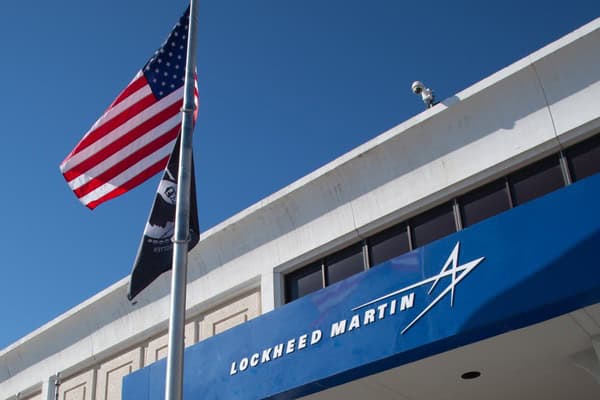
Lockheed Martin is helping strengthen the U.S. defense industrial base (Zacks.com).
What’s going on: The defense contractor’s Space Systems business unit recently finalized a modification contract deal to “provide systems engineering, test planning and long lead material to support missile production” to the U.S. Navy’s Strategic Systems Programs.
- The contract, valued at $99 million, is expected to be finished by Feb. 2, 2027.
Why it’s happening: “Nations are reinforcing their military capabilities to strengthen their defense structure in the growing threat environment.”
- Spending by countries on defense capabilities—including missiles—has picked up in recent years, following Russia’s invasion of Ukraine (Breaking Defense).
- “Lockheed’s weapon systems include precision strike weapons with long standoff ranges to keep pilots and aircraft out of harm’s way.”
Why it’s important: The growing number of global threats now confronting the U.S. and its allies mean we must be prepared, and manufacturers such as Lockheed Martin are a critical part of the equation.
Announcing the Winners of the 2024 Manufacturing Leadership Awards
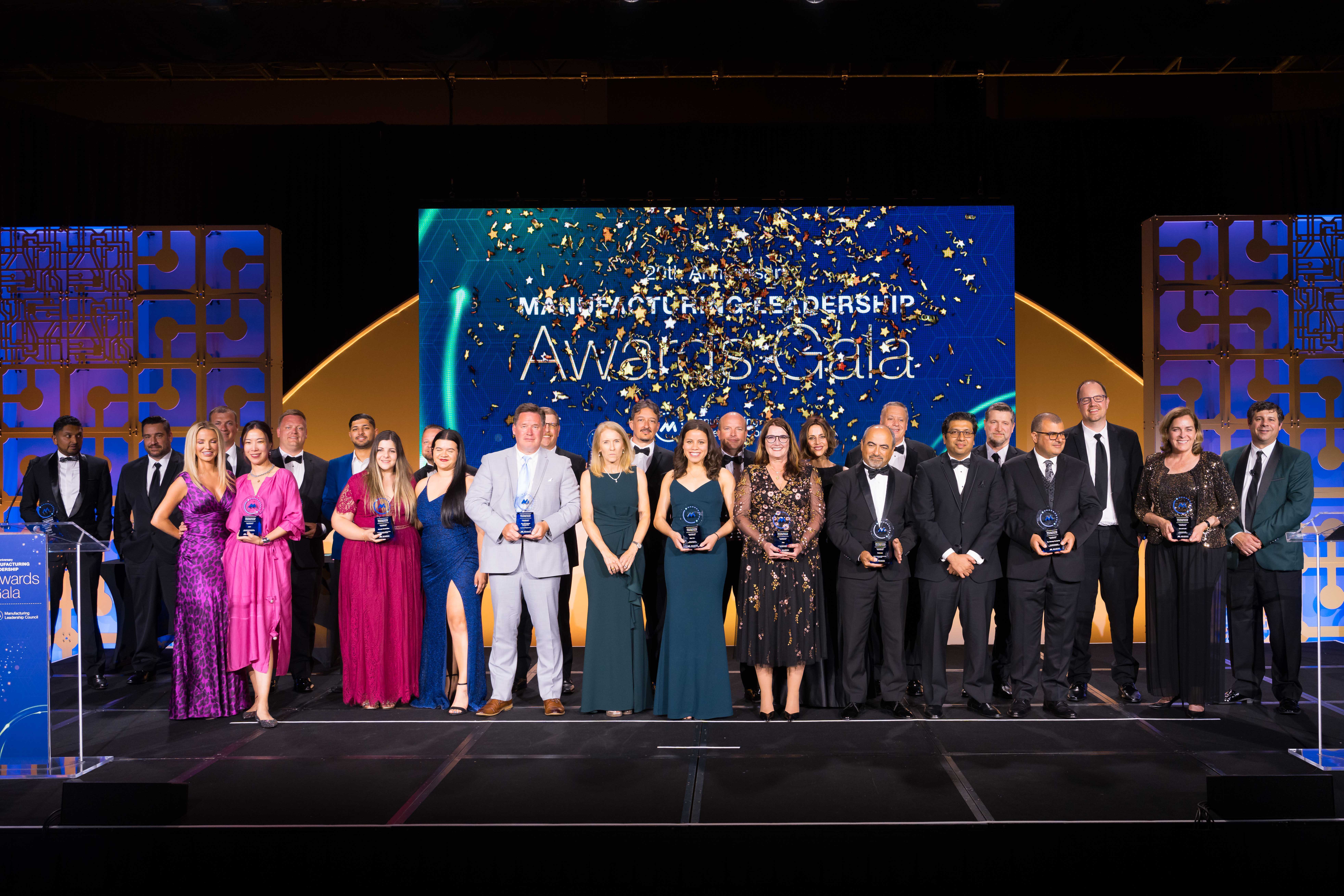
The names are in! The Manufacturing Leadership Council—the NAM’s digital transformation division—is pleased to announce the winners of the 2024 Manufacturing Leadership Awards.
Now in its 20th year, the awards competition recognizes outstanding manufacturing companies and their leaders for groundbreaking use of advanced manufacturing technology.
“The class of 2024 should indeed be proud of their achievements in advancing the digital model of manufacturing,” said MLC Founder, Vice President and Executive Director David R. Brousell. “The awards reflect the truly incredible amount of innovation taking place in all sectors of the industry.”
Manufacturing Leader of the Year: Cooley Group President and CEO Daniel Dwight is the 2024 Manufacturing Leader of the Year.
- Dwight, who also serves on the MLC’s Board of Governors and is a member of the Executive Committee of the NAM Board of Directors, has overseen a significant turnaround in Cooley’s business performance through digital transformation, with a commitment to investing in smart factory technologies and developing a digital-ready workforce and business culture.
- In addition, the MLC named Cooley Group the 2024 Small/Medium Enterprise Manufacturer of the Year.
Large Enterprise Manufacturer of the Year: Intertape Polymer Group is the 2024 Large Enterprise Manufacturer of the Year.
- The award recognizes IPG’s achievements in digital transformation, including technology integration and workforce training.
- The company has also made noteworthy strides in sustainability through reductions in both energy usage and waste.
More honors: The MLC also announced winners in 11 project and individual categories, as well as the winners of the Manufacturing in 2030 Awards. The latter are given to projects with particularly forward-thinking innovations.
- The MLC honored all finalists and winners at the Manufacturing Leadership Awards Gala last night in Marco Island, Florida. A complete list of finalists and winners is available here.
Nominations for the 2025 season of the Manufacturing Leadership Awards will open on Sept. 16, 2024. More information is available here.